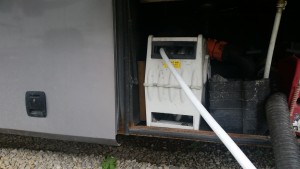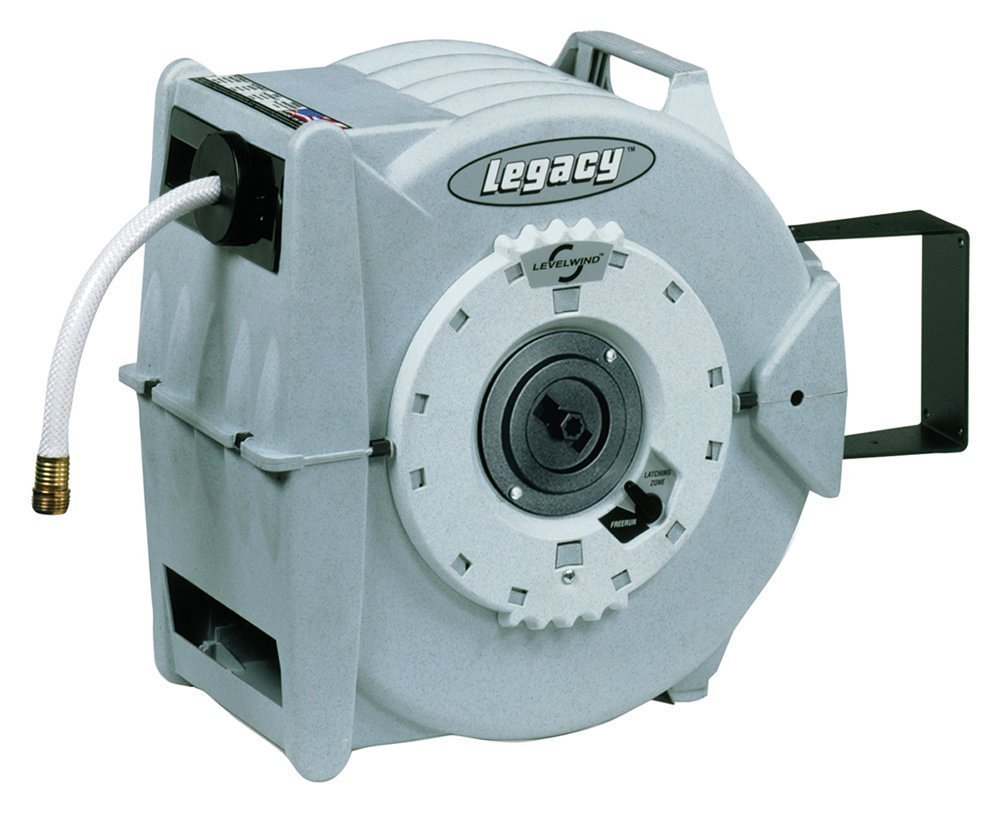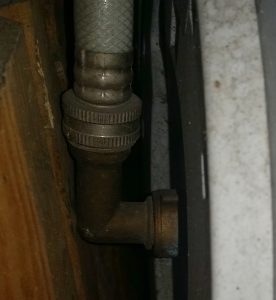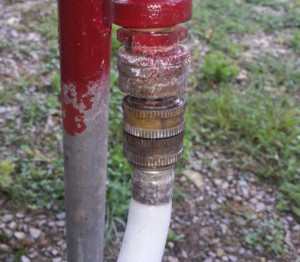Do you ever get frustrated rolling up a damp hose that’s collected all kinds of dirt and grass clippings? I know I did—especially in the humid south, when leaving in the morning, everything would be damp. Sometimes I’d think ahead, and remember to grab a paper towel to clean the hose when unhooking, but that didn’t always keep pant legs and shoes clean.
There are a number of made-for-an-RV hose reels which command a hefty price—some motorized, and most are open frames. Is there something better? Maybe. Using a garden hose reel with a drinking water hose sounded like a good idea. More than 2 years later, it’s still working great, with the hose up off the ground when I’m close to the hydrant. That includes using it through 2 winters where it saw either single-digit or below zero temperatures.
Here’s how to do it…
Start with a hose reel with a hose that’s long enough and suitable for drinking water. I’d avoid anything with a crank, since that’ll mean that you have to keep a good bit of space clear around it. I used a [amazon_textlink asin=’B00006FRJY’ text=’Legacy L8346 Retractable Hose’ template=’ProductLink’ store=’rvne-20′ marketplace=’US’ link_id=’55318ea9-6aa1-11e8-9159-e7e26371d905′], which you should be able to get, Prime-eligible from Amazon for under $160.
At 50 feet long, and 5/8” diameter, it’s more than adequate to reach any normal water hookup. It also happens to be made in the USA.
On both ends, though, a standard hose reel will have connectors with the wrong gender end fittings. The adapters you’ll need can be tough to find in many hardware stores. You’ll need one male-to-male and one female-to-female garden hose thread (GHT) adapter.
Gilmour 3/4-inch Brass Double Male Hose Connector, $9.81
Nelson Industrial Hose Fitting with Dual Swivel for Male Hose to Male Hose, $6.38
The adapter with two female ends will go on the end of the hose that pulls out to connect to the water source, and the one with two male ends will be used to connect to the RV’s water inlet. Depending on how you’re mounting it, you may want to also pick up a 90-degree hose adapter to fit in closer to a wall.
You’ll want to anchor it with the included bracket to the back or side wall of a compartment to keep it in place when you need to hook up quickly.
After two years, it’s working pretty well. It can be too stiff to roll up on its own in really cold temperatures (UPDATE: With a new hose, [amazon_textlink asin=’B003TFE7ZM’ text=’problem solved’ template=’ProductLink’ store=’rvne-20′ marketplace=’US’ link_id=’b1ae778b-6aa1-11e8-9b4d-59b084f8031f’].), but a little bit of help pushing on it has always been enough to roll it up (provided it isn’t full of ice!). But that’s pretty minor for a project that cost less than $200 and only took a few minutes to install.
Let me know your experiences!
-Dave






Great idea. I use this brand in my backyard and it works very well. Do you have a way to drain water from the hose so it doesn’t stay in there between uses?
I don’t, but it never sits for long either. I am probably going to replace the hose before winter though, with a FlexZilla drinking water hose. I have one of their air hose reels, and that hose stays extremely flexible even in the dead of winter. When I’m in cold weather and just hooking up to fill my tanks, I connect the hose and turn on my fill controller (another project that I need to write up). It’ll open the fill valves and keep them open until any ice in the reel is cleared and the tanks are full. In extreme cold, I usually just use the gravity fill with a different hose.